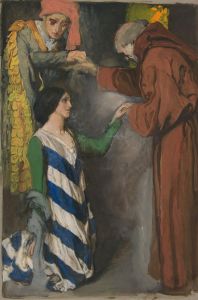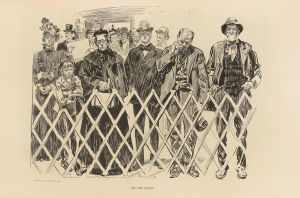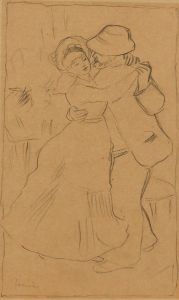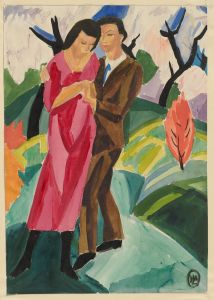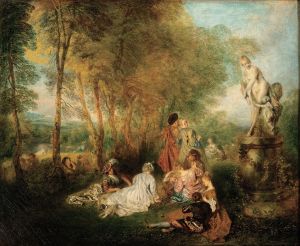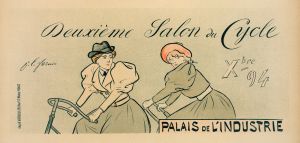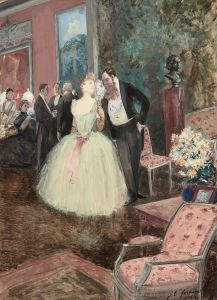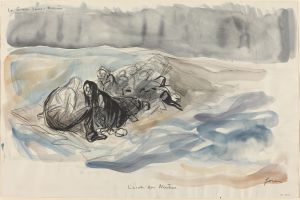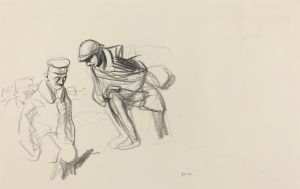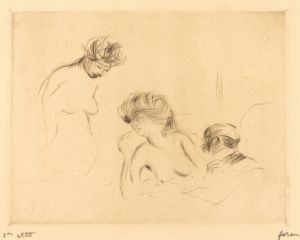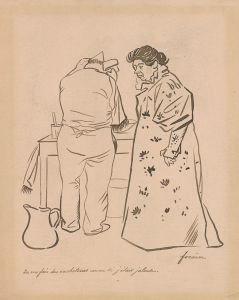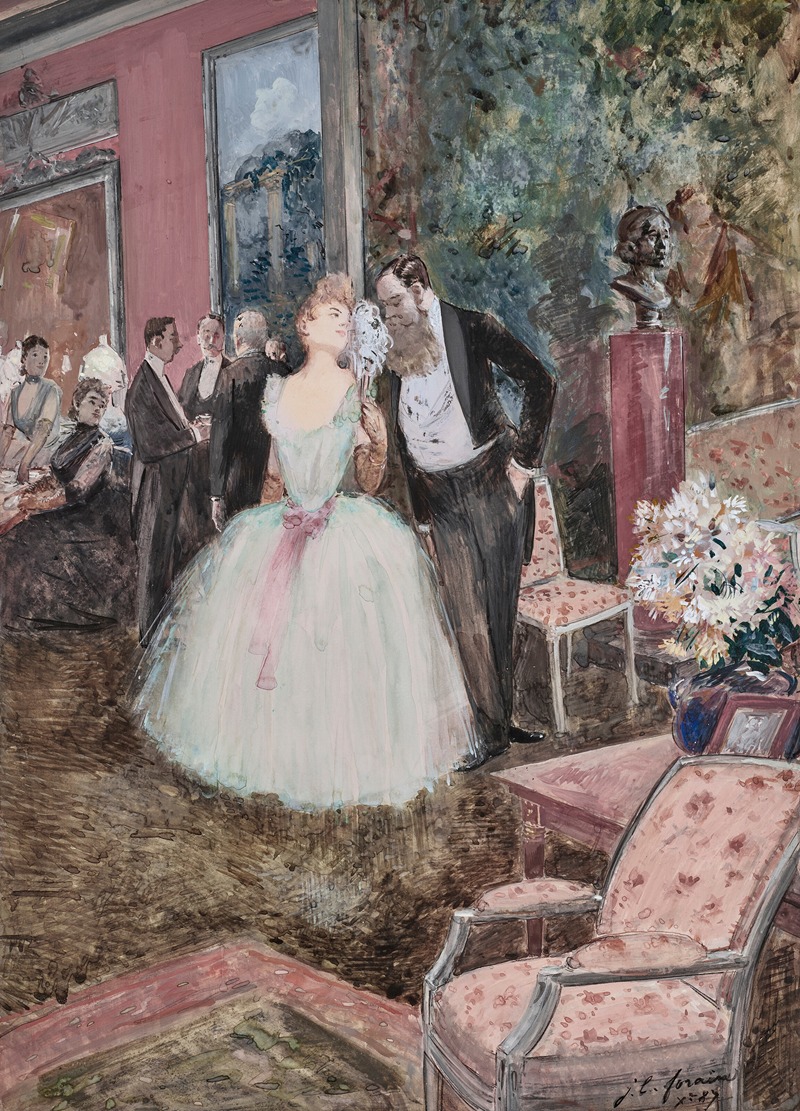
Scène de bal
A hand-painted replica of Jean-Louis Forain’s masterpiece Scène de bal, meticulously crafted by professional artists to capture the true essence of the original. Each piece is created with museum-quality canvas and rare mineral pigments, carefully painted by experienced artists with delicate brushstrokes and rich, layered colors to perfectly recreate the texture of the original artwork. Unlike machine-printed reproductions, this hand-painted version brings the painting to life, infused with the artist’s emotions and skill in every stroke. Whether for personal collection or home decoration, it instantly elevates the artistic atmosphere of any space.
Jean-Louis Forain was a notable French Impressionist painter and printmaker, known for his keen observations of Parisian society in the late 19th and early 20th centuries. One of his works, "Scène de bal," captures the lively and vibrant atmosphere of a dance scene, a subject that Forain frequently explored in his art.
Forain was born on October 23, 1852, in Reims, France, and moved to Paris at a young age. He was deeply influenced by the bustling life of the city, which became a central theme in his work. Forain's artistic career began in earnest when he joined the studio of Jean-Léon Gérôme at the École des Beaux-Arts. He later became associated with the Impressionists, a group of artists who sought to capture the effects of light and movement in their paintings.
"Scène de bal" is a quintessential example of Forain's ability to depict the social dynamics of his time. The painting illustrates a dance scene, likely set in one of the many popular dance halls or ballrooms of Paris. Forain's work often focused on the interactions between people, and this painting is no exception. It captures the elegance and excitement of the dance, with figures engaged in conversation and movement, reflecting the lively social life of the era.
Forain's style is characterized by loose brushwork and a keen sense of observation, which allows him to convey the energy and spontaneity of the moment. His use of color and light adds to the vibrancy of the scene, drawing the viewer into the world of the dancers. The painting is not just a depiction of a dance but also a commentary on the social customs and interactions of the time.
Throughout his career, Forain was known for his satirical edge, often highlighting the follies and vanities of society. While "Scène de bal" captures the joy and elegance of a dance, it may also subtly critique the superficiality of social gatherings. Forain's ability to balance beauty with social commentary is a hallmark of his work.
In addition to painting, Forain was a prolific printmaker and illustrator. He contributed to several publications, including the famous satirical magazine "Le Figaro," where he used his art to comment on political and social issues. His work in this medium further established his reputation as a keen observer of human behavior.
Forain's contributions to art were recognized during his lifetime, and he participated in several exhibitions, including those of the Impressionists. His work remains influential, offering insights into the social fabric of Paris during a period of great change and modernization.
"Scène de bal" exemplifies Forain's mastery in capturing the essence of a moment, blending the Impressionist focus on light and movement with his unique perspective on society. The painting continues to be appreciated for its artistic merit and its reflection of the cultural milieu of late 19th-century Paris.





